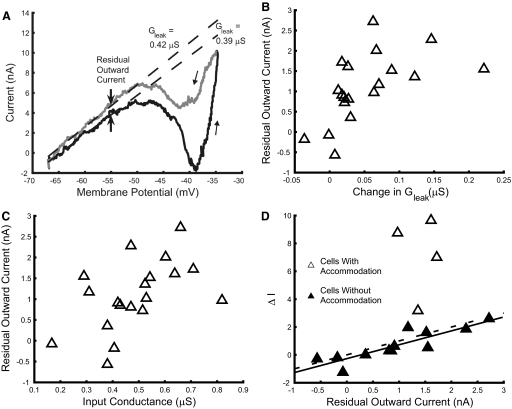Fig. 5.
Residual outward currents in hindlimb motoneurons. Voltage-clamp records often showed evidence of an outward current that persisted as membrane potential returned to resting levels, as shown in A. This residual outward current was measured as the difference between regression lines (arrows) fit to determine leak conductance on the ascending and descending limbs of the voltage ramp. Leak conductance was often greater on the descending limb of the voltage ramp; residual outward current was correlated with these changes in leak conductance as shown in B (r = 0.57, P = 0.01). C shows that residual outward current was dependent on input conductance (r = 0.52, P = 0.023). The relation between residual outward current and ΔI is shown in D. Filled symbols represent cells that did not accommodate appreciably during ramp current discharge. ΔI varied directly with residual outward current (Ires) in these motoneurons, as indicated by the regression line (solid; ΔI = −0.272 + 0.996Ires, r = 0.88; P < 0.001). A line of identity (ΔI = residual outward current; dashed) is shown for comparison.

